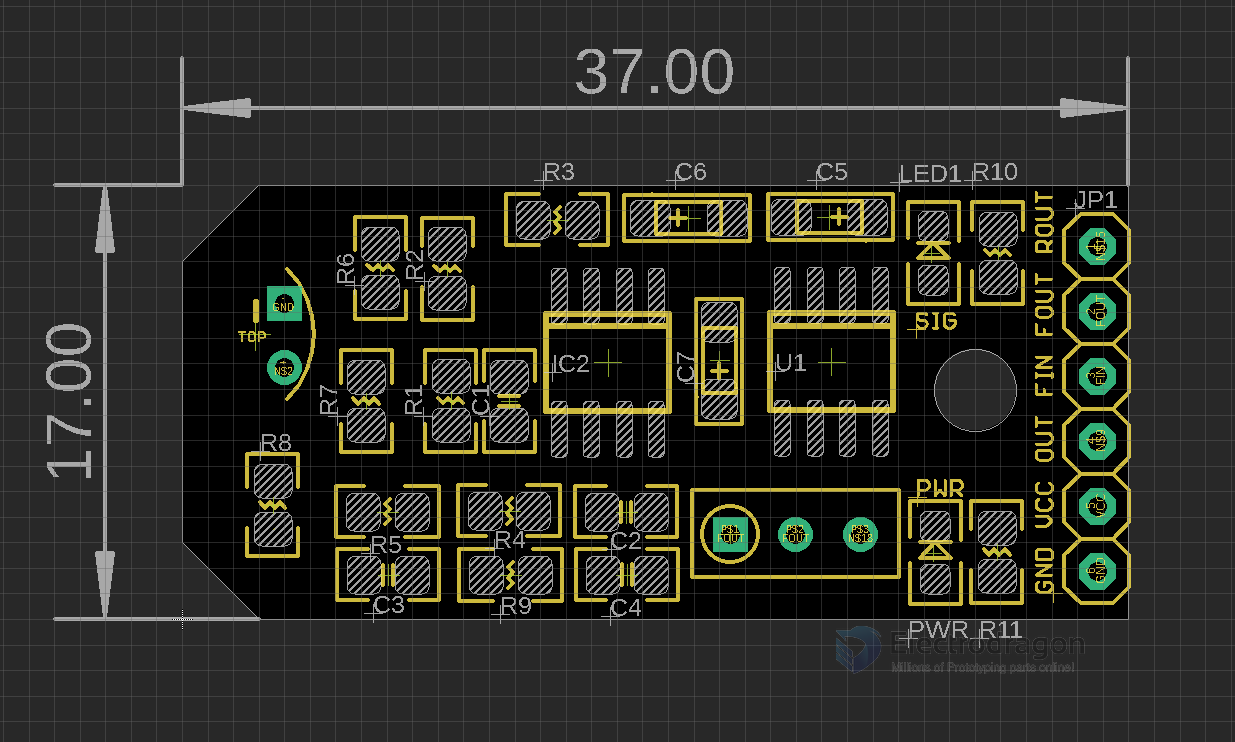Pin Configuration

- GND - GND
- VCC - VCC, 3-12V, DC, use 5V directly is fine
- OUT - output, when detect certain frequency output TTL low
- FIN - Identifier frequency input, this can input the frequency for identifying, be aware the amplification should lower 0.2V
- FOUT - Identifier frequency output pin, this pin output the identifying frequency which is set
- ROUT - Amplifier real time output pin, detect audio amplifier signal real time output.
Note:
- make sure VCC and GND is not reverse
- Use adjust resistor, make sure the indicating LED off and then start to use, since there is noise in the environment, so you have to set the noise to a small frequency area.
Use Guide
- Power up, power LED up
- Choose and use a fixed voice source, which is the one for identifying, keep it continuously output. use phone app, recommanded 500KHZ, less noise to ear.
- tuning trim pot, until singal indication LED on
- counter clockwise turn for high HZ, clockwise turn for low HZ
- the trim pot has no stop, and reach limit after 15 turns, so when you turn 15 turns, try reverse direction.
- trim pot only reach the frequency in a very small range, and LED on
- Do not turn too fast, and keep close to sound source, otherwise can miss the frequency.
- keep microphone board close to sound source
- turn off sound source, Signal indicating LED off, now the calibrating is finish.
Note: Suggest to use the software called
- audioSCSI which can output a fixed frequency on PC end
- Audio test ton generater or frequncy sound generator on android.
Schematic

Legacy wiki page
https://w.electrodragon.com/w/LM567
Demo
- new - https://youtube.com/shorts/KJCgCbb6NGQ?si=vd_X2q7l4S0wWLOf
- https://www.youtube.com/watch?v=ChL9mMirgk4
- https://twitter.com/electro_phoenix/status/1497890295253389314
- https://t.me/electrodragon3/215
Old Logs
https://twitter.com/electro_phoenix/status/1001750412347650048